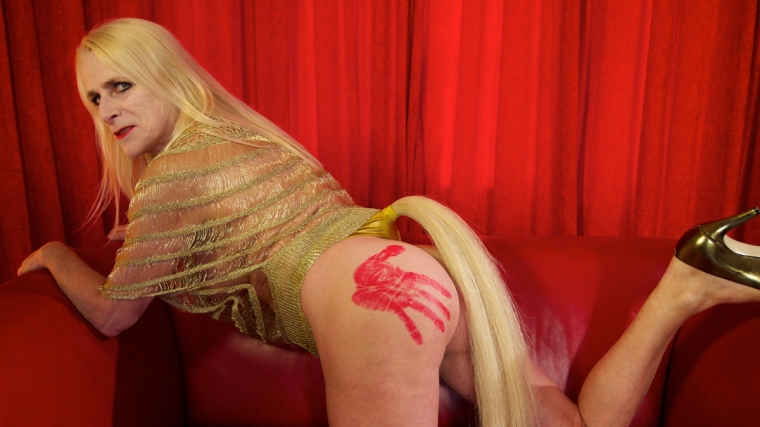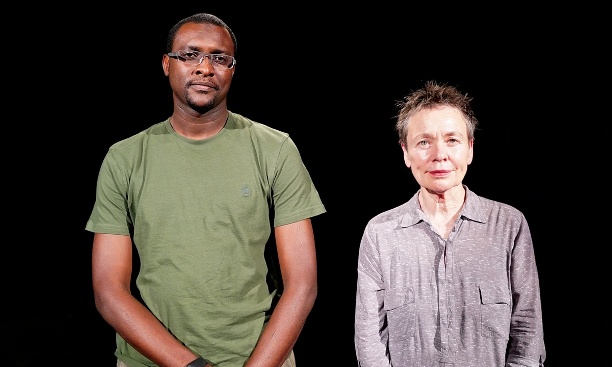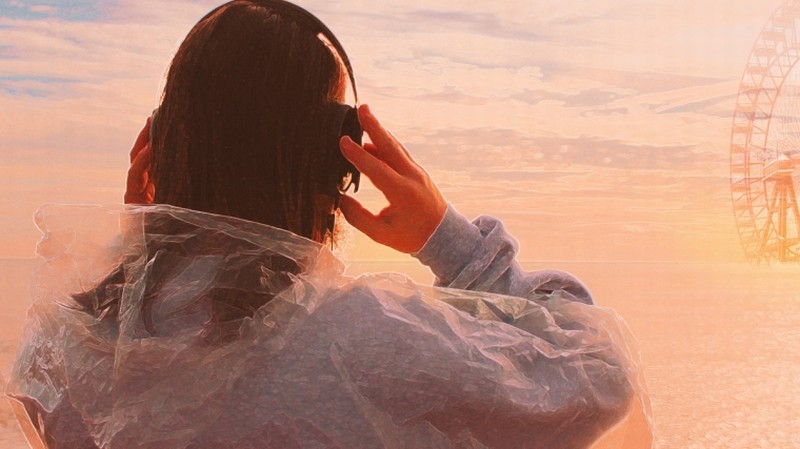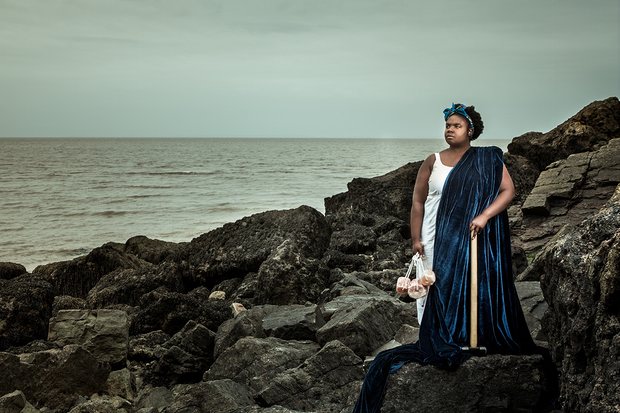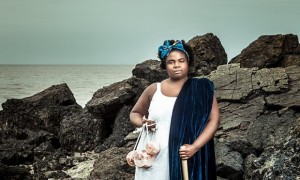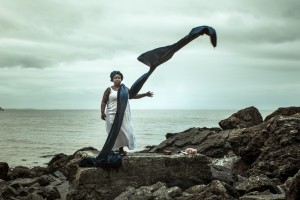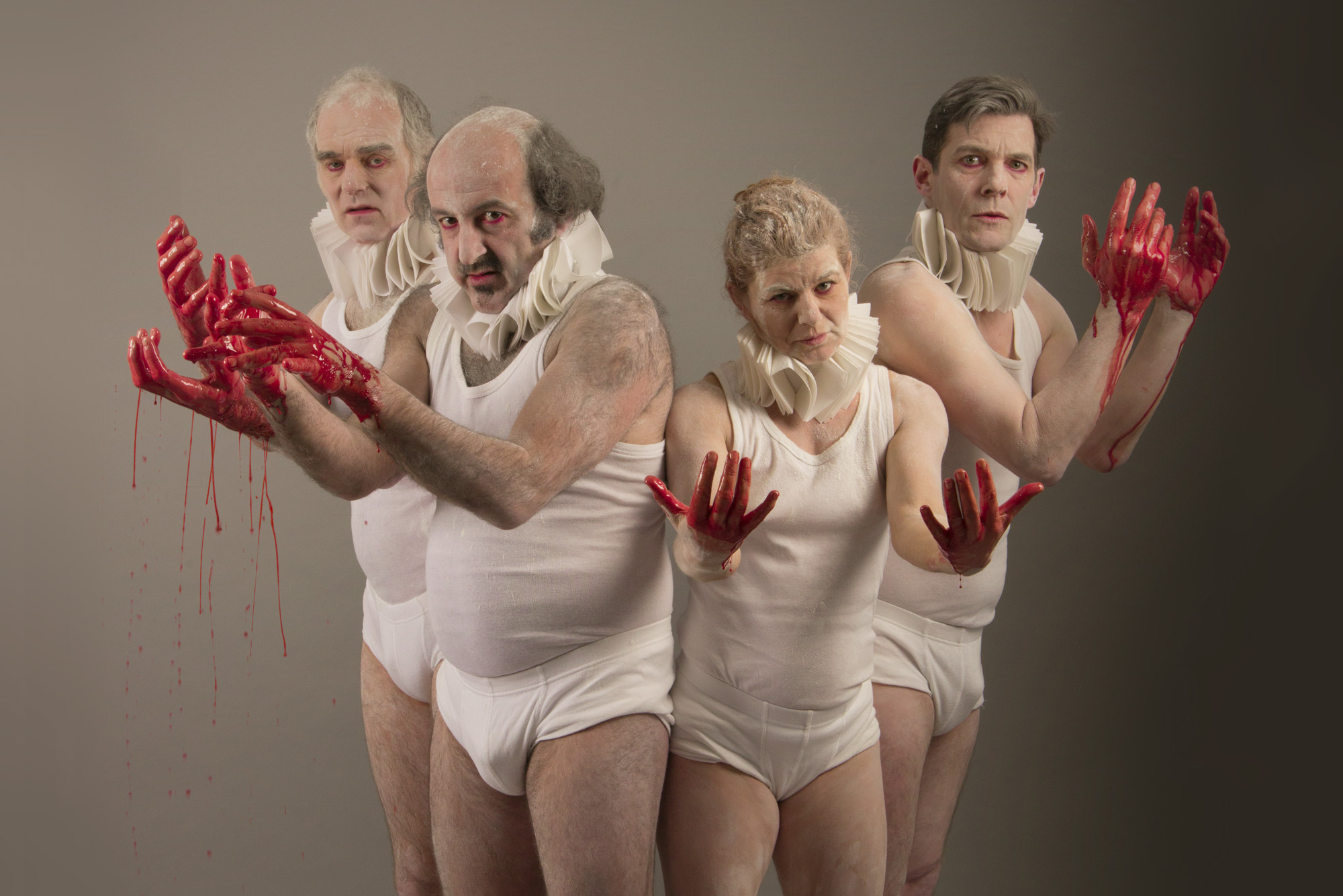Are there any – girls – in the house? Any good little girls? Any poppets, any princesses, any little angels? Or are there any naughty girls out there? Any tittle-tattles or trouble-makers? Well, whoever you are, all of you – let’s have a party! Mrs Mills, that’s what we need. Mrs Mills tinkling the old ivories. Let’s All Go Down the Strand (have a banana). Oh what fun we had!
Are there any – women –in the house? Any foxy ladies? Any b-itches? Any yummy mummies? Any pishy old Susans with trouble downstairs? (Jump, Motherfucker, Jump).
In her previous show, The English Channel, Liz Aggiss asked: Do I please you, or do I please myself? In Slap and Tickle, she doesn’t even bother asking the question, seeking our permission, she just goes for it, doing exactly what she wants, digging deeper into the exploration of her own place in the world as a mature female dancer, and along the way poking and prodding the memes and mores of the stifling post-war British culture that both formed her, and gave her plenty to rebel against. Housewife’s Choice. Listen With Mother. Janet and John. Doris Day.
Slap and Tickle is in three acts, these punctuated with audience participation party games (pass the parcel, and a manic balloon twisting interlude with the voice of Emma Kilbey urging us to spank and bite the balloons) that give her time to change from one extraordinary costume to another. In Act One, her Cinderella phase, she is in silver slippers and a gorgeous old-gold party dress, with a vest and breeches underneath that would do Buttons proud. Act Two sees her resplendent in a dramatic remodelling of the figure-hugging ‘little black dress’ that every grown woman ought to have in her wardrobe. By Act Three, she’s in a red dress and no knickers, sporting a magnificent horse’s tail (platinum blonde to match her hair) that dances enticingly from her bare bottom as she struts and prances around the stage. Now tell me, is this any way for a woman in her 60s to behave?
The movement work makes use of a vocabulary that will be familiar to Aggiss aficionados. The intense, graphic shapes of early Modernist dance, the old-gold fabric extending and whirling around her a la Loie Fuller. The grotesque body distortions of German Expressionism, Hilde Holger channelled with beautiful precision. The clever (and very funny) play on concealing and revealing the body through costume, which here includes numerous unnerving and/or hilarious headless vignettes, and a marvellous moment in the red dress section when it gets pulled over her head leaving just a Burka-like slit for her eyes. Object play has it’s day, and a lot of it is pretty saucy. Ping pong balls and coins tumble from her nether regions. Cock bunting is unfurled. And there’s ventriloquism of the Ken Campbell variety (i.e. so bad it’s good), as she addresses a battered china doll with the question: What are you afraid of?
There are a lot of words: sharp, sassy spoken words that subvert and ridicule the constant naming and shaming that girls and women endure all through their lives, words that mock the platitudes that keep us under the patriarchal thumb; and sung words, as tunes such as Doris Day’s Que Sera Sera, and Ian Dury’s Reasons to Be Cheerful are deconstructed and reclaimed as (post) feminist anthems. Elsewhere, Doris Day herself also features in the soundtrack, singing A Woman’s Touch, which gives our Liz the opportunity to do a bit of stage cleaning with her trusty cock duster.
It is all totally marvellous – Slap and Tickle feels in some ways like a companion piece to The English Channel, but it also feels like a bringing together of themes, motifs and ideas from many earlier works; a referencing and re-engaging with a fantastic body of performance work by an artist who is going from strength to strength in her seventh decade.
Ultimately, this is a show about female visibility and self-determination. A fabulously funky show that on the 40th anniversary of punk reminds us that perhaps the best feminist rallying cry of all time was Oh Bondage, Up Yours. There’s a place for calm, rational argument – but this isn’t that place. This is a brash and blowsy women’s room with obscenities scrawled on the mirrors in red lipstick, discarded knickers on the floor, and a virtual strap-on waiting to be harnessed. Look John Look / See John See / Janet found her cock / Eventually.

